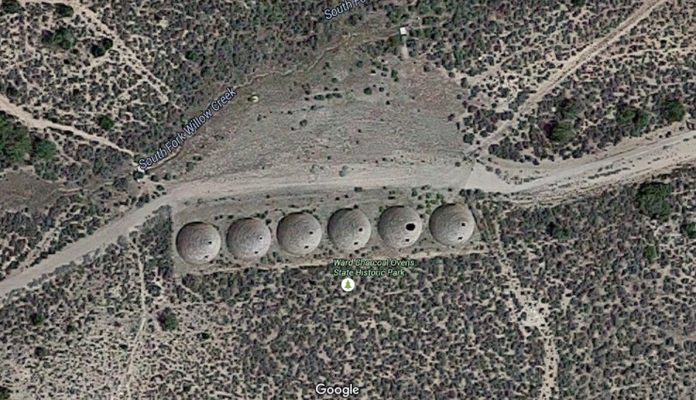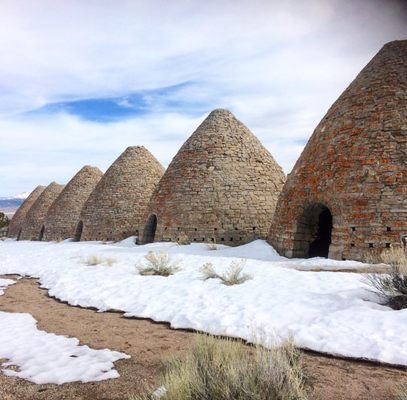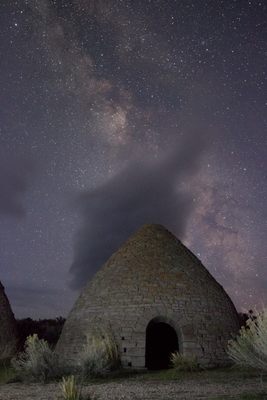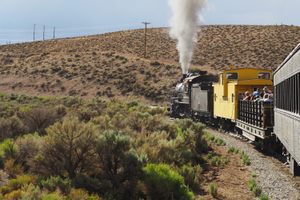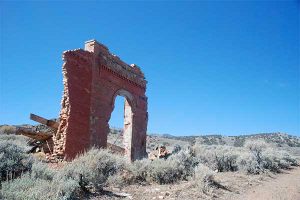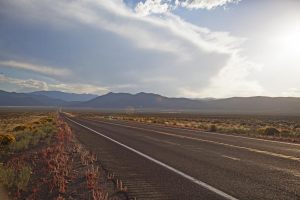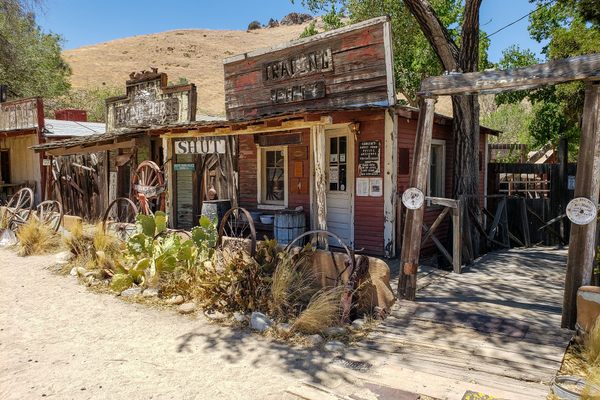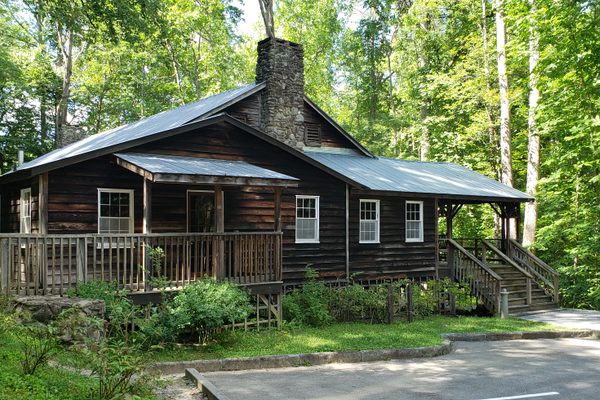About
Near Ely, Nevada, six stone charcoal ovens dominate the desert landscape and give this historic site its peculiar name. The Egan Mountain Range is just a mile or two to the west, but down here in the basin it’s the thirty-foot “beehives” that grab you – whispering tales of silver lodes, prospectors, and stagecoach bandits.
Nearly as wide as they are tall, the stout ovens date to the late 19th century. When veins of silver ore were discovered in the area as early as 1872, an enterprising miner named Thomas Ward harnessed the momentum of the Nevada silver rush and built himself a town. Ward, Nevada, about two and a half miles north of the ovens, was a quintessential boom-town, owing its life, and ultimate demise, to two things: the expansion of mining, and a surplus of scruffy pines.
Since the silver didn’t jump out of the ground in nuggets, it needed to be smelted out of the ore, and that meant hot, hot furnaces. In order to get temperatures high enough, charcoal was essential. A wood fire couldn’t do it. Luckily, the area was covered with piñon pine and juniper. Neither were any good as building material, but after ten days of a slow and steady burn they made great charcoal. Ward figured he could make money as the area’s charcoal supplier, so he built the beehive ovens. They’d pack each oven with 35 cords of wood. Multiply that by six ovens, and … that’s just a whole lot of wood. No surprise, the area pretty quickly ran out of pine.
As the wood supply dwindled, the silver lodes were winding down too. Ward reached a population of 1500 in 1877. The mines declined, and devastating fire destroyed most of the town’s buildings. The boom was bust by 1885.
Ward’s settlement and charcoal venture are gone, but through the decades his ovens have stood solid, sometimes providing shelter for ranchers, prospectors and lost travelers. And there are rumors--just rumors, mind you, that they did less community-minded duty by harboring stagecoach bandits.
Related Tags
Know Before You Go
The Park is open all year, for both day use and camping. There are facilities for hiking, picnicking, mountain biking & fishing, and in winter months for cross-country skiing and snow-shoeing. Temperatures can vary quite a bit from daytime highs to nighttime lows, so check the website for what to expect at different times of the year (and for details on fishing, camping, and reservation requirements).
The Park is located about 18 miles south of Ely, Nevada. Take US Rt. 50/93 south for about 7 miles, then it’s 11 miles southwest on Cave Valley Road. Cave Valley is a well-maintained gravel road, accessible by passenger vehicles year round, but check snow and road conditions in winter months before making the drive.
There is a parking fee of $5 for Nevada residents and $7 for non-residents. Fees for camping are $12 for Nevada residents, $14 for non-residents.
Community Contributors
Published
May 4, 2016











